What Is the Moroccan Koumya and Why Is It Significant?
The Moroccan Koumya, also called Koumaya, is a traditional dagger deeply rooted in Berber and Arabic heritage. Unlike a standard knife, this dagger carries cultural symbolism, representing identity, elegance, and social status among the Chleuh people of the Atlas Mountains. Historically, it was worn as part of traditional dress, attached to the djellaba with the tip of the scabbard facing forward. The Koumya belongs to the broader family of Jambiya daggers, which are found across the Arabian Peninsula, yet Morocco’s version stands out for its unique shape, craftsmanship, and ornamentation. Owning such a piece is not simply acquiring a tool but keeping a living tradition alive.
- Traditional Berber and Arabic design.
- Symbol of heritage, social status, and elegance.
- Part of the Jambiya family with Moroccan distinction.
How Is This Moroccan Koumya Dagger Crafted?
This dagger is handmade, which means every detail is carefully worked on by artisans rather than produced in bulk by machines. The blade is forged from stainless steel, ensuring durability while maintaining its decorative quality. The hilt is crafted from wood, giving it a natural texture and authentic look. Each part of the Koumya is manually shaped, polished, and assembled, leading to slight imperfections that highlight its handmade character. These small marks of individuality are not flaws but proof of authenticity. This craftsmanship reflects the artisan’s dedication and the continuation of traditional Moroccan dagger-making techniques.
- Handmade by Moroccan artisans.
- Stainless steel blade, wood hilt, decorative scabbard.
- Imperfections highlight authenticity.
What Are the Dimensions and Specifications?
This Koumya dagger is balanced in both size and proportions, making it suitable for display or ceremonial use. The hilt measures 17 cm (6.7 inches), giving enough grip for holding or showcasing. The blade itself is 20 cm (7.87 inches) long, with a spine thickness of 3 mm (0.11 inches), offering a sturdy yet elegant profile. The scabbard is 24.5 cm (9.65 inches) long, providing secure coverage for the blade. The total length of the dagger reaches 42 cm (16.53 inches), making it an impressive item whether hung on a wall, displayed in a case, or worn as part of a traditional outfit.
- Hilt: 17 cm / 6.70 in.
- Blade length: 20 cm / 7.87 in.
- Blade thickness: 3 mm / 0.11 in.
- Scabbard: 24.5 cm / 9.65 in.
- Total: 42 cm / 16.53 in.
Why Is Stainless Steel Important for This Blade?
Stainless steel is chosen for this blade to balance durability, resistance, and easy care. Unlike carbon steel, stainless steel resists corrosion better, making it suitable for long-term preservation in collections or displays. However, since the dagger is handmade and not machine-treated, some rust marks may naturally appear. These marks add to the authenticity and vintage appeal of the piece. Stainless steel also provides a smooth, polished surface that reflects light beautifully, enhancing its display value. The choice of this material ensures that the Koumya remains both a strong blade and a decorative work of art.
- Stainless steel ensures durability.
- Polished surface enhances display.
- Possible minor rust adds vintage charm.
How Is the Koumya Traditionally Worn?
In Moroccan tradition, the Koumya was more than a dagger; it was part of ceremonial dress. Men wore it with the scabbard tip facing forward, suspended from a cordelière on the right shoulder. Positioned at the left side, it symbolized dignity and readiness without being primarily intended for combat. The dagger’s placement was as important as its craftsmanship, representing belonging and pride in cultural identity. Today, wearing or displaying it continues this tradition, connecting modern collectors and enthusiasts to centuries of heritage.
- Traditionally worn with djellaba.
- Carried on the left side with scabbard facing forward.
- Represents belonging and cultural dignity.
What Makes This Dagger a Collector’s Item?
Collectors often look for authenticity, historical connection, and craftsmanship in their pieces. This Moroccan Koumya delivers all three. Unlike factory-made replicas, this handmade dagger carries imperfections that testify to artisan work. Its link to the Berber and Islamic traditions of Morocco gives it cultural depth, making it more than just a decorative blade. For collectors of Islamic art, North African heritage, or traditional weaponry, it offers an item that bridges history and artistry. Displaying it in a collection adds cultural richness and a unique talking piece.
- Authentic handmade Moroccan craftsmanship.
- Historical and cultural relevance.
- A unique addition for collectors of daggers or Islamic art.
How Can It Be Displayed in Modern Settings?
This Koumya dagger fits naturally into both traditional and modern interiors. It can be mounted on a wall, placed in a display cabinet, or showcased on a decorative stand. In a home with Moroccan, Middle Eastern, or rustic décor, it blends seamlessly as a cultural accent. In modern minimalist spaces, it stands out as a statement piece, drawing attention for its unique shape and history. Its balance of wood, metal, and ornamentation allows it to complement a variety of settings while maintaining its traditional roots.
- Ideal for wall displays or cabinets.
- Complements Moroccan, Arabic, or rustic décor.
- Works as a unique statement piece in modern interiors.
Why Do Handmade Imperfections Add Value?
Factory-made knives and daggers often look identical, lacking character. Handmade imperfections—such as slight variations in blade finish, hilt shape, or scabbard alignment—make each Koumya unique. These differences prove that the dagger is not mass-produced but individually crafted. For collectors and enthusiasts, such authenticity is highly valued, as it connects the object directly to the artisan’s hand. The natural imperfections also reflect the vintage style, enhancing its traditional appeal and making it stand out from generic decorative knives.
- Handmade imperfections create uniqueness.
- Proof of artisan work, not factory-made.
- Adds authenticity and vintage appeal.
How Does It Connect to the Larger Jambiya Tradition?
The Moroccan Koumya belongs to the extended family of Jambiya daggers found throughout the Arab world. Jambiyas vary in size, shape, and decoration, depending on the region. Morocco’s Koumya distinguishes itself with its slim, slightly curved blade, wooden hilt, and elegant scabbard. While Yemeni and Omani jambiyas often feature heavy ornamentation and curved hilts, the Koumya reflects Moroccan design aesthetics—practical yet refined. Owning a Koumya links the collector to this broader Arabic tradition while focusing on a distinctly Moroccan interpretation.
- Part of the Jambiya dagger family.
- Moroccan interpretation: slim blade, wooden hilt.
- Connects to broader Arabic traditions.
Who Would Appreciate This Moroccan Koumya?
This dagger appeals to a wide audience. Collectors of traditional weapons will value its historical and cultural significance. Enthusiasts of Moroccan and Islamic art will admire its authenticity. Interior decorators may use it as a statement piece in cultural or themed spaces. For gift purposes, it suits individuals interested in heritage, craftsmanship, or unique collectibles. Whether appreciated for its history, aesthetics, or symbolic value, the Koumya is more than just a blade—it is a meaningful artifact with timeless appeal.
- Ideal for collectors of weapons and Islamic art.
- Suitable as a cultural décor piece.
- A thoughtful gift for enthusiasts of heritage and tradition.

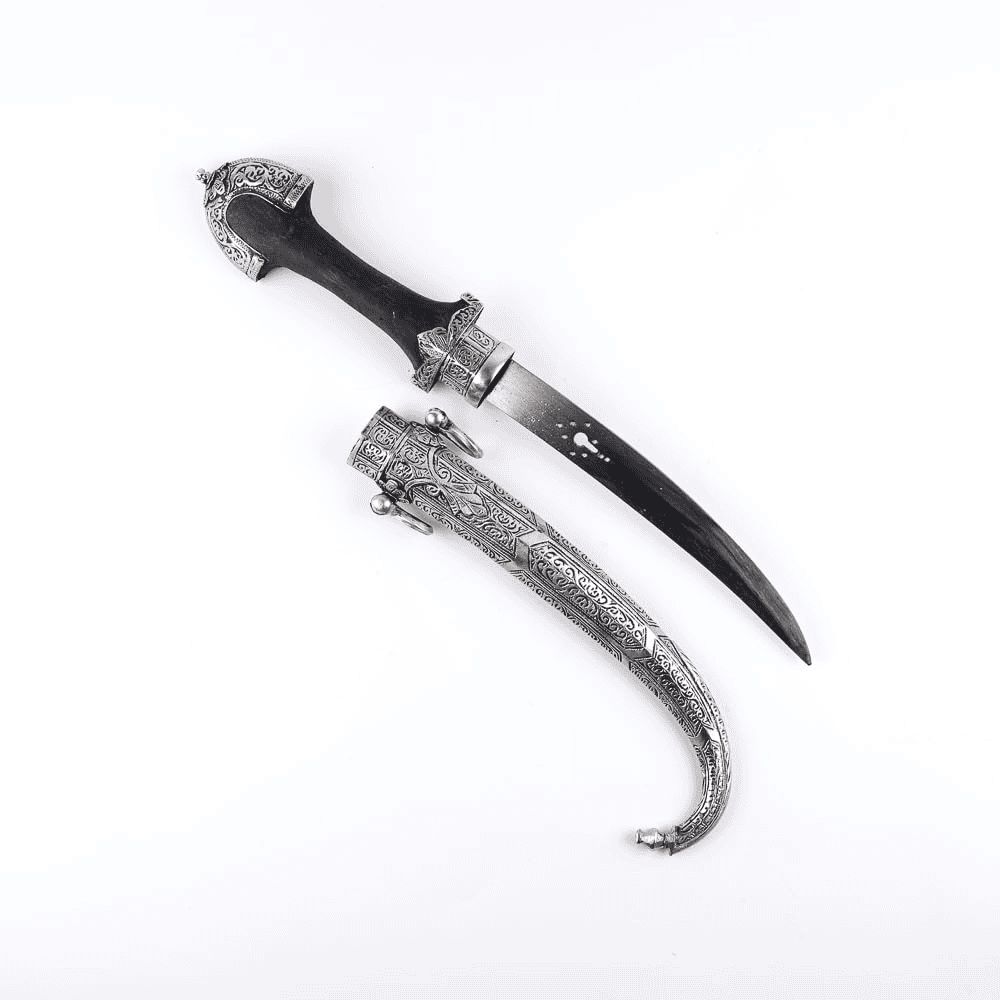
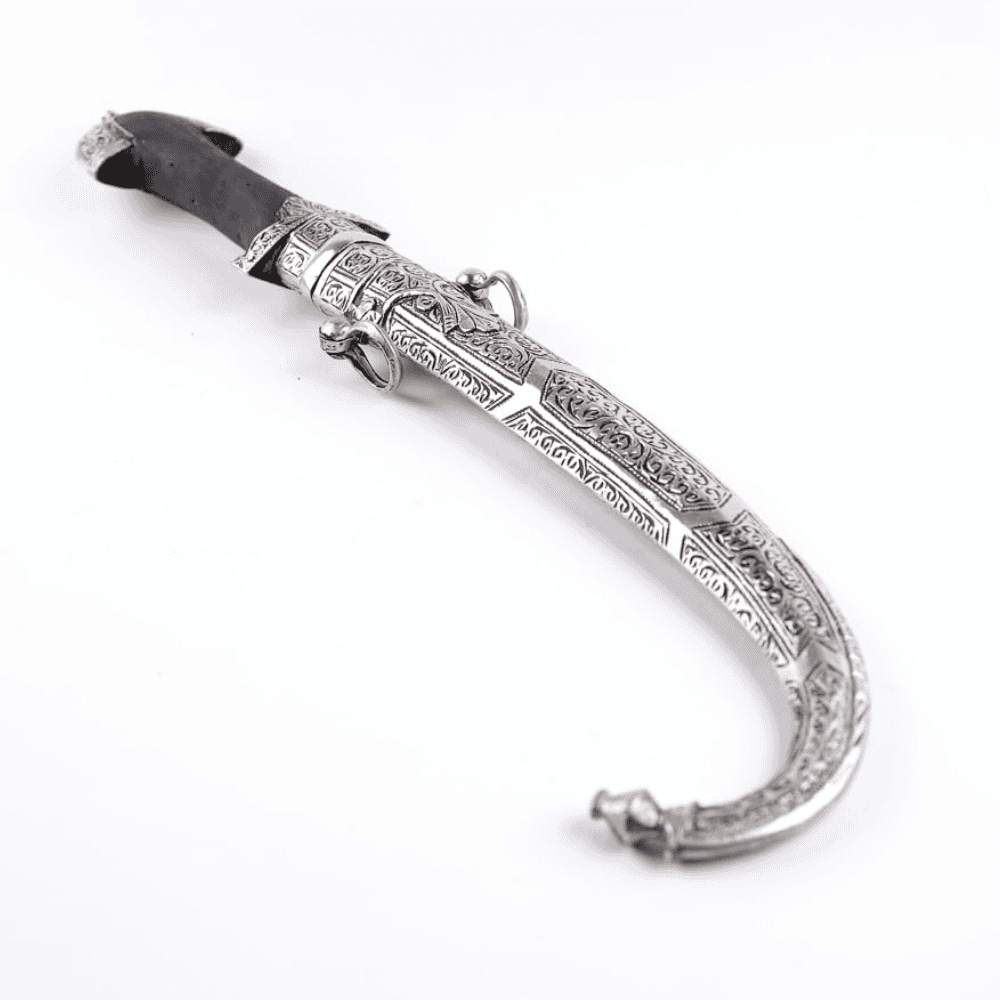
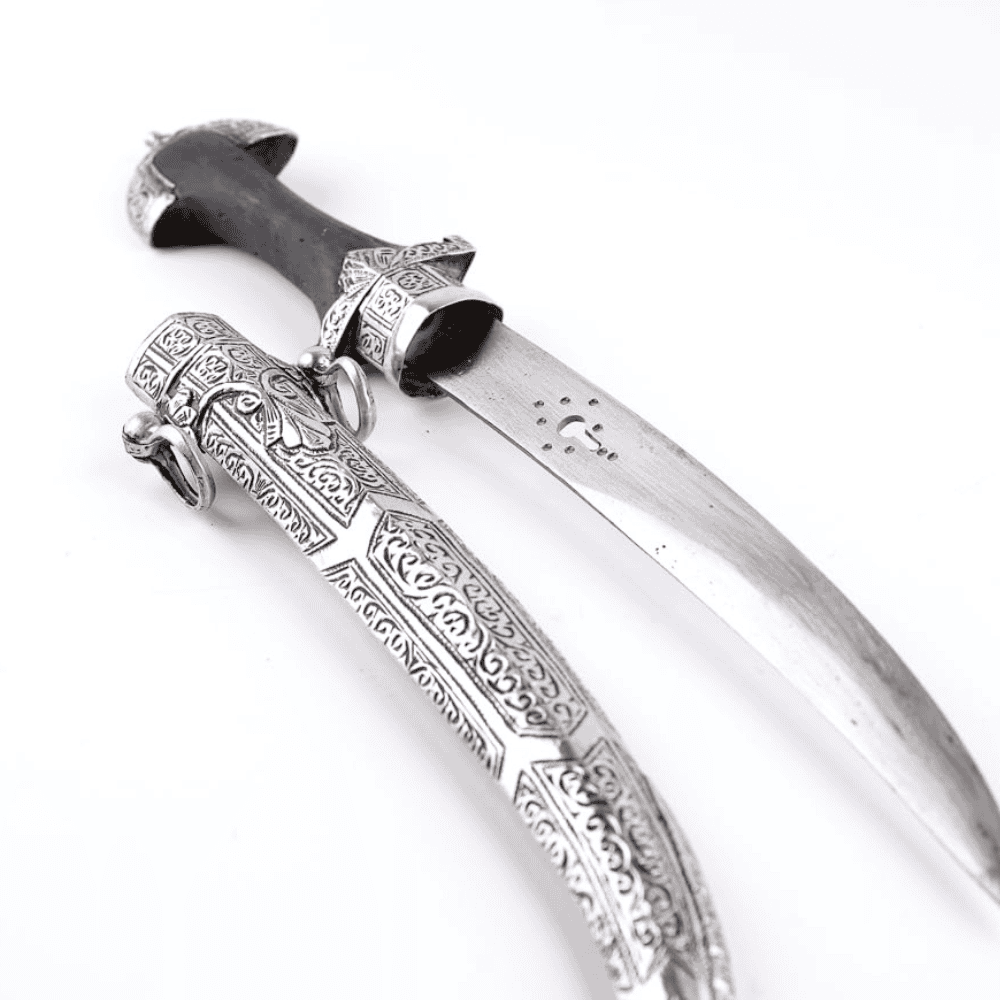
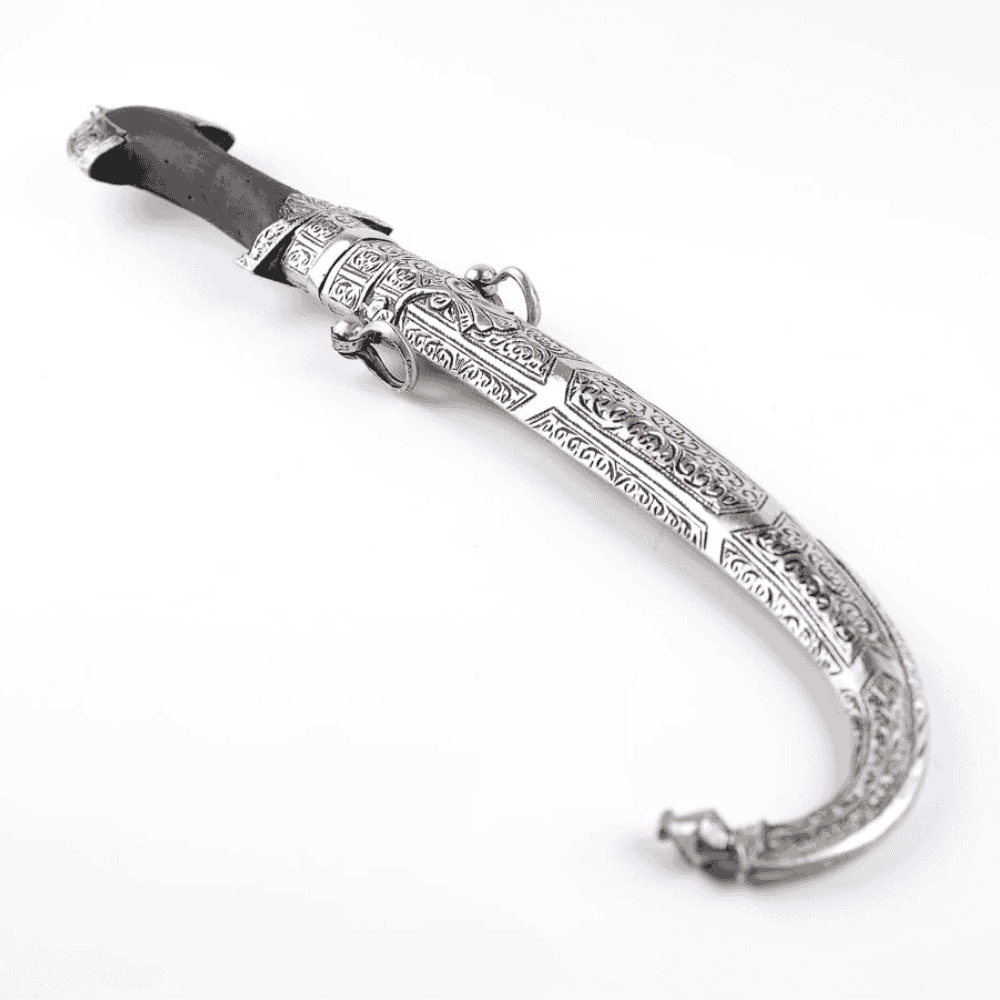
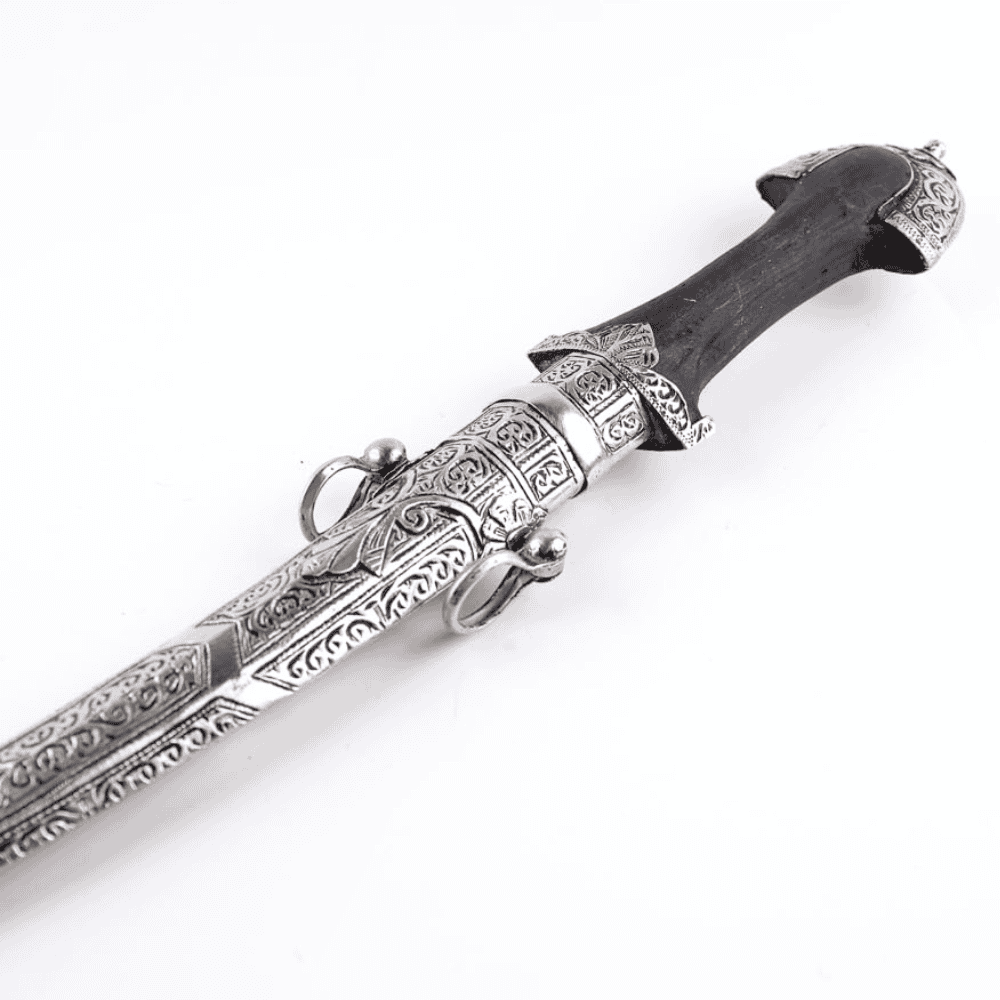
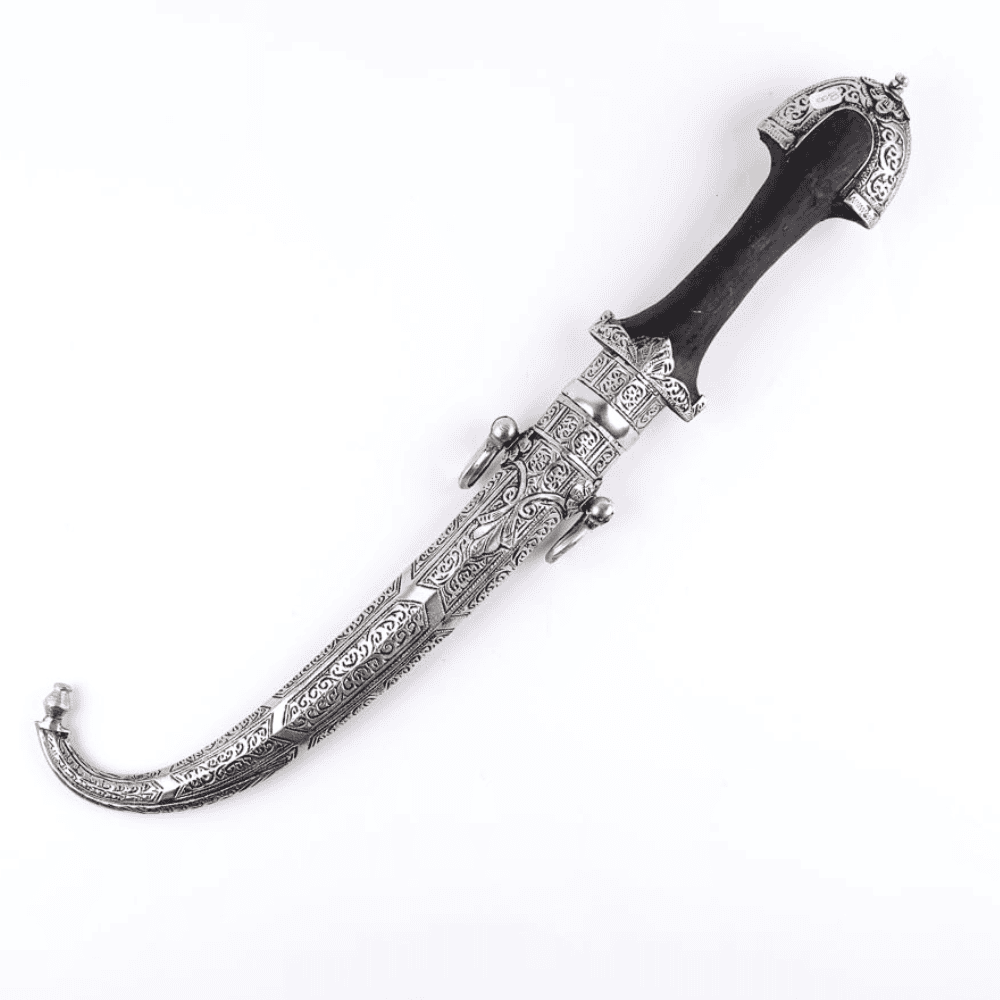
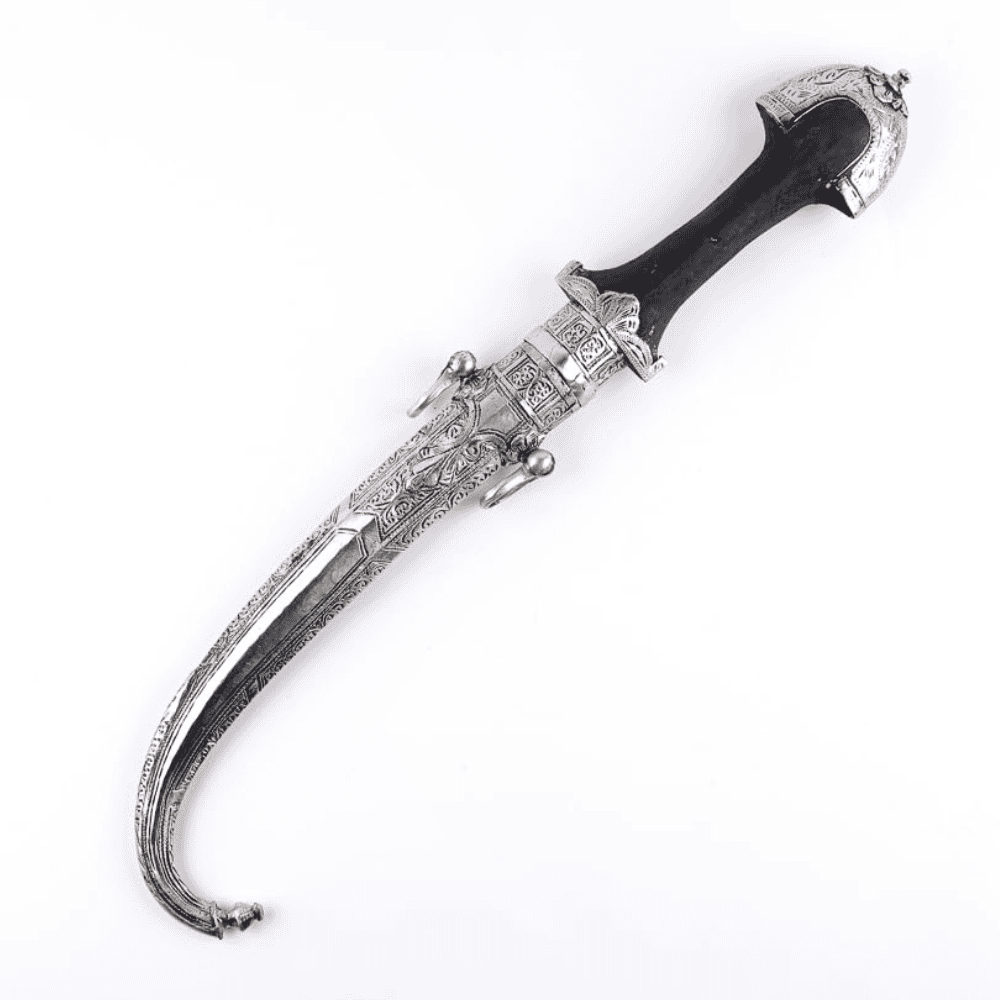
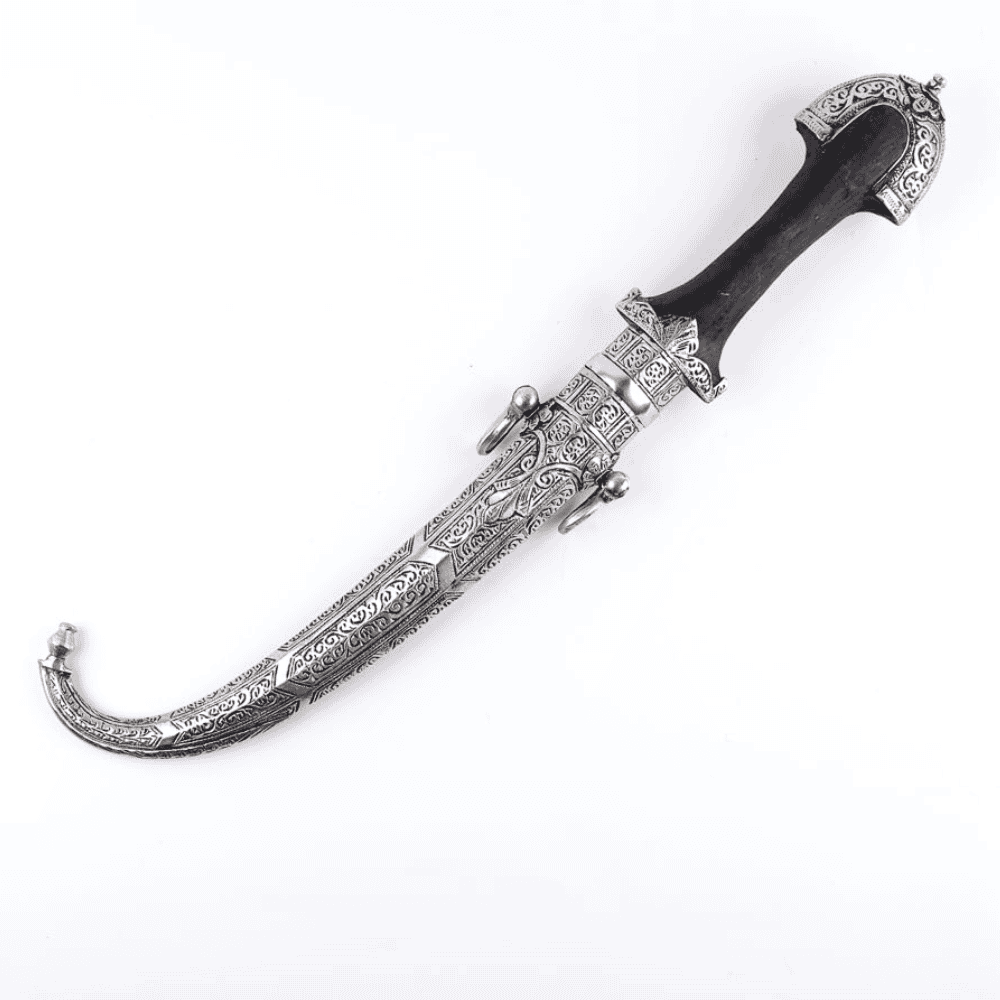
Reviews
There are no reviews yet.